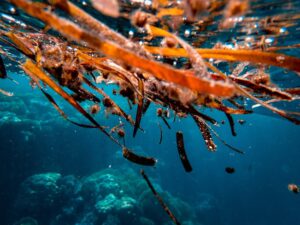The WA Government, researchers, Traditional Owners and pastoralists have joined forces against this invasive, poisonous pest.
Cane toads entered northeast Western Australia 15 years ago.
Since then, their numbers have exploded and efforts to slow the toads’ trail of ecological destruction have failed.
Now, scientists are drawing a line in the sand to slow the spread of the toxic amphibian – the Toad Containment Zone.
ON THE HOP
Western Australian Premier’s Science Fellow Professor Ben Phillips is heading up the project.
He’s a professor of population biology at Curtin University who has studied cane toads for many years.
“Cane toads were brought to Australia in 1935 and they were distributed up and down the eastern seaboard by the sugar industry in 1937,” says Ben.
“They’ve been spreading ever since.”
They entered WA in 2009.
In the last 15 years, cane toads have completely colonised the Kimberley. Now they’re spreading into the Pilbara.
THE ULTIMATE COLONISER
What makes cane toads excellent colonisers?
They can move very long distances. When they first arrived in Australia, Ben says cane toads were dispersing at around 10 kilometres per year.
They’re speeding up. Now, they’re moving at 43 kilometres per year – more than four times faster than their speed 80 years ago.
They also have a very high reproduction rate. A single female can lay up to 30,000 eggs in one sitting.
“Not all those eggs survive … but it gives you a sense of how many offspring they can produce,” says Ben.
Modelling shows that 90–95% of the Pilbara would be occupied by cane toads without immediate action. This would directly impact 10–24 native species.
“In some sense, they’re a magnificent animal that is very good at what it does,” says Ben.
“[But] it’s really confronting to see them arrive in a place that you know well and have the impacts that they have.”
Watching their advance during fieldwork in the Northern Territory was “astonishing”, he says.
“We could literally go out every night and see the invasion front moving forward every week.”
IN THE ZONE
The Toad Containment Zone is the latest weapon in the fight against the toad.
The WA Government will fund the first stage of a 150-kilometre barrier between the coast south of Broome and the Great Sandy Desert.
Cane toads can’t travel through the desert because they need water to survive through the warm dry winter. So, to move into the Pilbara, they must travel down a slim corridor.
Nearly all of the permanent water in this corridor is agricultural water.
“A lot of that agricultural water is accessible to toads currently because it leaks and there’s no fencing around other parts of the infrastructure to prevent toads from getting to it,” says Ben.
“If we do this [Toad Containment Zone] across about a 150 kilometre stretch of this corridor, all of the science says that the cane toad invasion will stop.”
A 150 kilometre area seems large, but Ben is confident.
“It’s not rocket science, it’s plumbing.”
A ONCE-IN-A-LIFETIME OPPORTUNITY
Agricultural water infrastructure will be upgraded in 150 locations across the Toad Containment Zone.
A single leaky pipe can sustain 1000 toads, Ben says.
Water troughs the toads can access will be replaced or fenced with troughs set high enough to keep the toads out.
The Toad Containment Zone has been developed from more than a decade of scientific research and was a key recommendation from the 2019 Federal Senate Inquiry into controlling the spread of cane toads.
Ben is confident the landscape barrier can work and says it will function in a similar way to a firebreak.
“This toad break … will be very effective at stopping cane toads.” he says.
“This really is a once-in-a-lifetime opportunity.”












